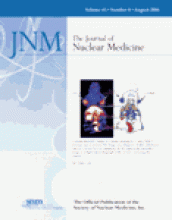As stated in the preface, this book was conceived in the 1990s, when the human genome project began to advance rapidly and much knowledge of genes and gene function was accumulating. The intent of the editors was to gather the contributions of basic scientists in relevant fields of biochemistry, physiology, instrumentation, and various nuclear medical subspecialties, all of whom were charged with relating work in their own field to the significance of the emerging genome.
Depending on the subject at hand, some authors place much emphasis on genomic relationships whereas others make more casual references. Readers will realize the technologic potential for the diagnostic capabilities of nuclear medicine to exploit genomic revelations. Readers will also recognize that a wide scope of techniques is available to nuclear medicine to evaluate the risk-to-benefit ratios of ionizing radiation, thus being reminded of the importance of understanding biochemistry and physiology as a solid foundation for understanding pathology and clinical medicine.
Nuclear medicine deals with the functions and variations of proteins as membrane receptors, hormones, antibodies, peptides, and other entities. Such subjects appear throughout the book. After an international group of some of the editors gave genesis to the initial concept, many authors discussed the themes and thrust of the book at various societies of nuclear medicine around the world, at workshops sponsored by the U.S. Department of Energy, and at the National Institutes of Health.
The concerted efforts of 73 authors should help in the use of radionuclides for in vivo observation of molecular interactions and their consequences, thus helping to bridge the gap between basic biochemical research and clinical application.
The authors describe the application of nuclear medicine techniques, for diagnostic and therapeutic purposes, to the analysis of cellular biochemistry and its relationship to diseases expressed by tissue and organ dysfunction. They discuss both the analysis of the pathophysiology of various diseases and the potential link of these diseases to individual genes and genomic factors. Examples are given of how current tracer techniques have advanced this process in the past and are likely to be expanded in the future.
The tools of nuclear medicine have shown enormous potential for in vivo observation of complex system functions at the various levels of biologic organization: molecular, cellular, tissue, organ, and whole body. Subsequent to the great success in qualitative in vivo imaging of metabolism using refined tomographic and high-resolution techniques, the demand now is obviously to focus on quantifying the manifestations of functional genomics and proteomics in situ. In this way, molecular nuclear medicine will play an increasing role in disease definition, preventive medicine, and treatment planning and monitoring, with probable substantial cost savings.
This book is organized into 5 parts: primary topics, whole-body processes, organ systems, tumors, and special topics. Part I deals with measurement of biochemical reactions, genomics, proteomics, cell signaling, labeled agents, instrumentation for measuring metabolism, tracer kinetics, and compound delivery. Part II focuses on compound transfer, coagulation, imaging of infection, body composition, aging studies, and metabolic indicators. Part III discusses endocrinology; cardiac disease; imaging of substance abuse and cerebral metabolism; monoamine oxidase; amino acid transport studies; lung, liver, kidney, and gastrointestinal scanning; and imaging of musculoskeletal disease. Part IV deals with molecular imaging in oncology, nuclear imaging of gene expression, and DNA-based radiopharmaceuticals. Part V concerns the role of nuclear medicine in relation to alternative modalities, MRI contrast agents, magnetic and optical imaging, and the biologic effect of low doses of ionizing radiation.
The 292 figures, partly in color, and 49 tables are of good quality. The references are fairly up to date and accurate.
For the most part, the information about molecular nuclear medicine is easy to understand. This book will serve well both as a reference and for daily use by both novices and experienced nuclear practitioners.
Footnotes
L.E. Feinendegen, W.W. Shreeve, W.C. Eckelman, Y.-W. Bahk, and H.N. Wagner, Jr., eds.
New York, NY: Springer, 2003, 795 pages, $325







